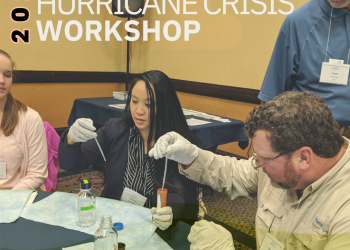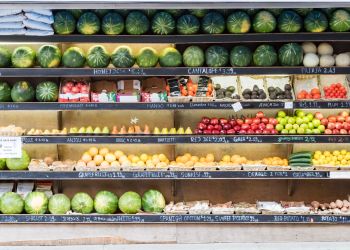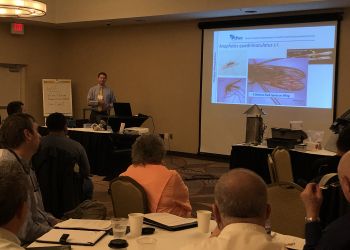This story was contributed by Tania Nur from Franklin County Public Health in Columbus, Ohio in their own words. Tania can be reached at [email protected]. NACCHO provided resources to FCPH to aid this locally-funded food safety initiative.
Franklin County Public Health (FCPH) is dedicated to protecting a diverse community against foodborne illness through the violation of the Ohio food code. Sometimes, regular inspection and monitoring become inconvenient for non-English speaking operators.
To solve this problem, FCPH came up with a unique idea to launch a food safety manual in multiple languages.
Background
FCPH, known for its diverse population, has taken several initiatives to support non-English speaking operators within the county. Recognizing the language barriers, we have implemented different language assistance services in Arabic, Somali, Cantonese, Nepali, and Spanish. This enables operators to communicate effectively with inspectors and seek guidance in their native languages. We have also developed multilingual posters highlighting common violations, which were provided to the operators.
The language barrier significantly hinders operators’ ability to comprehend essential guidelines and implement necessary precautions. This also increases the risk of foodborne illnesses and regulatory non-compliance. To address these difficulties comprehensively, we recognized the need to provide support in operators’ native languages. By doing so, we ensure that they have access to clear and concise information that promotes proper food safety practices. This initiative not only fosters a diverse and inclusive food safety environment but also aligns with our commitment to safeguarding public health. Through these efforts, we strive to bridge the language gap and empower operators to adhere to food safety regulations effectively. By providing comprehensive support and resources in their native languages, we aim to elevate food safety standards, reduce risks, and create a healthier community for all.
Steps Taken by the Local Health Department
The Food Safety and School Health division aimed to address the language barrier faced by non-English speakers among food operators. The initiative involved creating a multilingual Food Safety Manual. The program, based in Franklin County, Ohio, was developed and supported by the Food Safety and School Health Division, along with collaboration from the communications team.
Field Health Inspectors collected data through a survey conducted using Survey Monkey. After collecting data through the survey, the Food Safety and School Health Division, in collaboration with the communications team, spent months brainstorming and developing the multilingual Food Safety Manual. The implementation of this initiative would likely align with existing regulations and guidelines concerning food safety in the county.
The Food Safety Manual was translated into six major languages: English, Amharic (Somali), Nepali, Arabic, Spanish, and Chinese. By providing this manual in multiple languages, the division aimed to overcome language barriers and facilitate a better understanding of food safety practices among non-English speaking food operators in Franklin County. We have also uploaded a PDF copy of each manual on our website free for everyone to download and save their own copies.
Click here to view the manuals.

Results
Achieving success requires time, effort, perseverance, and a series of steps. Our ongoing initiative to provide multilingual Food Safety Manuals to our operators is a testament to this. We are dedicated to consistent progress toward our goal. The manuals have been well-received by our operators, who are delighted to have a handy resource in their own language. The inclusion of pictures in the manuals makes it convenient to train non-English speaking employees, as visual aids are effective in conveying information. We have also added important documents like employee health policy, time and public health control policy, cooking logs, cooling logs, etc.
We have already witnessed positive changes among some operators. For instance, an Arabic operator mentioned using the manual to train his daughter, who assists him on weekends. Additionally, a Nepali operator expressed gratitude for being able to print multiple copies of the required posters to display in his store. These instances of positive behavior indicate the effectiveness of our initiative. As we continue to provide these manuals to all operators and receive such positive feedback, we are confident that our efforts will contribute to improved food safety practices and a safer environment for both operators and customers.
By addressing the language barrier, we are also fostering positive cooperation between the health department and operators. It showcases our dedication to supporting operators of diverse linguistic backgrounds, empowering them to understand and implement essential food safety practices effectively.
Next Steps and Key Takeaways
The implementation of the Food Safety Manual for our operators is indeed a commendable initiative, taking public health awareness to the next level. While we have made significant progress by providing manuals in multiple languages, we acknowledge that there are still non-English speaking operators in our community who do not yet have access to a manual in their language. However, we remain committed to expanding this initiative in the future, ensuring that all operators have the necessary resources available in their own language.
This initiative may serve as a remarkable example for other local health departments to follow. By addressing the language barrier, we are also fostering positive cooperation between the health department and operators. It showcases our dedication to supporting operators of diverse linguistic backgrounds, empowering them to understand and implement essential food safety practices effectively. By extending this initiative to include all non-English speaking operators, we can enhance public health outcomes and create a safer environment for both operators and customers. This initiative is a testament to the positive impact that can be achieved when health departments proactively engage with operators to address their unique needs and foster a culture of cooperation and mutual support.






